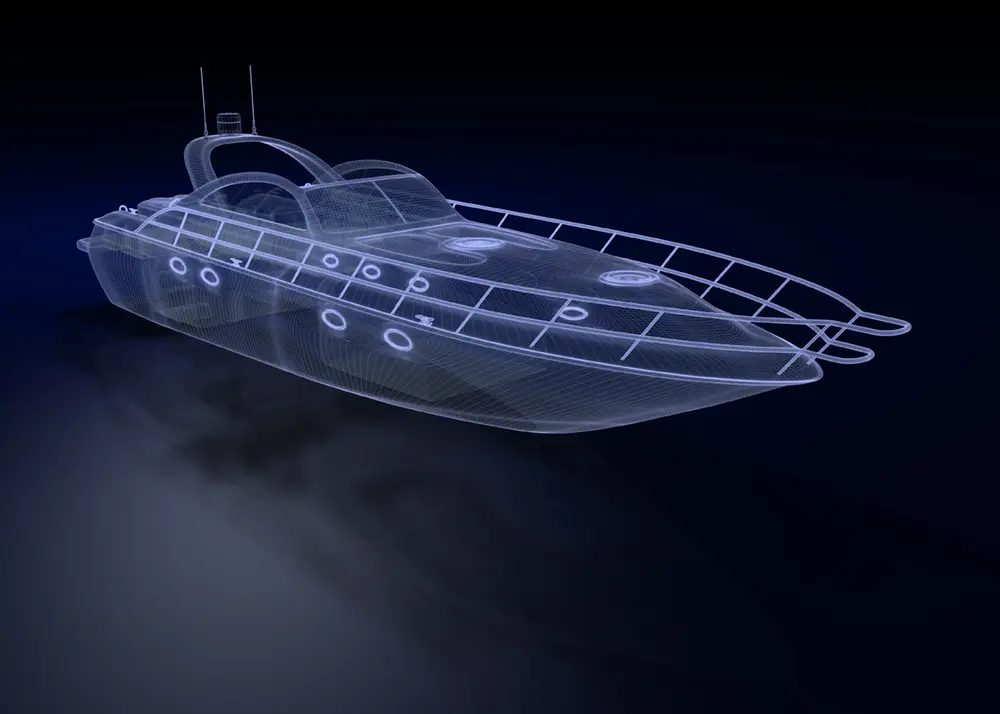Any problem with your boat can be frustrating and compromise your boating experience, but below, I’ve compiled a list of some of the worst boat design and construction faults in my opinion. Here are my top 10:
- Hull Structural Members Made With Low Quality Plywood
It’s terrible to think that people purposefully make bad products that they know cause problems, but one of the biggest examples of this is seeing some of the most popular entry-level boats riddled with rot because the lowest possible quality plywood was used during construction to save money – allowing water to seep right in and wreck havoc.
- Air Conditioning Ducts Not Properly Insulated
People always think about water damage in boats as coming from outside in, but not many people stop to consider the type of water damage that can occur just from not properly insulating a boat’s air conditioning ducts. For boaters, it may just seem obvious, and yet marine surveyors everywhere will likely tell you that they often see plywood components damaged by sweating ducts and excess condensation.
- Poorly Designed Generator Exhaust Systems
Transom outlets often allow water into the engine by pushing it back through the exhaust. This is a particularly big problem for sport fishermen.
- Compromised Hull Sides
Once again to cut costs, many hull sides no longer have the same supportive framing, which has led to more and more problems concerning panting and panel deflection. Problems are often seen at the deck/hull joint (especially if it’s only screwed together), as well as in stress cracking, porthole leaks, and interior attachment problems.
- Exposed Electrical Devices
Inexperienced boat designers will often make the grave mistake of installing sensitive electrical components in places that are virtually guaranteed to get wet, resulting in significant water damage and often times system failures.
- Horribly Made Deck-To-Hull Joints
This is one of the most common issues marine surveyors see, and can lead to some majors problems and frustrations, including boat interiors full of mildew and excessive rust and water stains just to name a few.
- Sealed Hull Compartments
Not being able to access your boat’s internal hull means that if water were to ever start leaking inside, you either may never even know, or if you do know, there is nothing you can do to stop it from filling up and causing major deterioration of stringers, bulkheads, and other structural hull members.
- Plywood Structures Painted With Gel Coat
A lot of builders will try to make their plywood structures look glassed over by laying on a nice thick layer of gel coat. However, as many seasoned boaters know, gel coat will absorb water like crazy, causing the plywood structures to do the same and eventually resulting in cracks, serious water damage, and subsequent rot.
- Careless Aluminum Fuel Tank Installation
So many people complain, and yet this problem still remains. Builders who mount aluminum fuel tanks on plywood decks that are bound to come into contact with bilge water are every boater’s worst nightmare.
- Poorly Designed/Lack Of Engine Hatch Gutters
Keeping water out of your engine is basic beginner knowledge for boaters, and yet, although a few builders out there are getting better, many boat designers still choose to install low quality engine hatch gutters, or forgo them completely – leading to pretty steep costs for boat owners who’re left with corrosion damage and engine failures later on.
Want to make sure your boat, or a boat you’re interested in purchasing, is free from any of these, or other similar serious problems? Trust professional marine surveyor Christian A. Syoen at CAS Marine Surveyor. If you are considering the purchase of a new or used boat and are looking for a marine surveyor, call Christian today at 1.810.531.0992 or fill out the form in the sidebar to schedule your free consultation.
